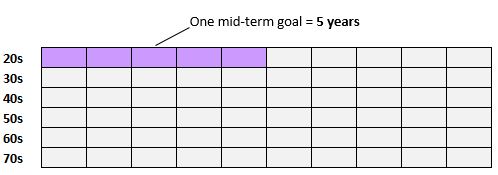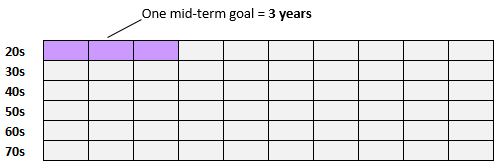
5 min read
At some point in your life, you’ve probably been told that you need to set goals to get what want.
Do you want to get in better shape? Then set a goal to lose X pounds in Y weeks.
Do you want to start your own blog? Then set a goal to get X page views in Y months.
Do you want to increase your net worth? Then set a goal to save X dollars in Y years.
Unfortunately, while a goal is useful for giving you something to work towards, merely setting one does not guarantee that you’ll achieve the results you desire.
In Atomic Habits, James Clear shares four inherent problems with goals:
1. Winners and losers have the same goals. “Every Olympian wants to win a gold medal. Every candidate wants to get the job. And if successful and unsuccessful people share the same goals, then the goal cannot be what differentiates the winners from the losers.”
2. Achieving a goal is only a momentary change. “Imagine you have a messy room and you set a goal to clean it. If you summon the energy to tidy up, then you will have a clean room—for now. But if you maintain the same sloppy, pack-rat habits that led to a messy room in the first place, soon you’ll be looking at a new pile of clutter and hoping for another burst of motivation.”
3. Goals restrict your happiness. “The problem with a goals-first mentality is that you’re continually putting happiness off until the next milestone.”
4. Goals are at odds with long-term progress. “Many runners work hard for months, but as soon as they cross the finish line, they stop training. The race is no longer there to motivate them. When all of your hard work is focused on a particular goal, what is left to push you forward after you achieve it? This is why many people find themselves reverting to their old habits after accomplishing a goal.”
James explains that having a goal is useful for providing direction, but the way to actually get results is to set up systems and habits that lead to results. He shares that “goals are good for planning your progress and systems are good for actually making progress.”
The Value of Setting Mid-Term Goals
If goals are mostly useful for giving you something to work towards, then how lengthy should the goals you set actually be?
In my mind, there are three different types of goals you can set:
Short-term goals: Goals that you’d like to accomplish in one year or less.
Mid-term goals: Goals that you’d like to accomplish in three to five years.
Long-term goals: Goals that you you’d like to accomplish in 10 years or more.
I’ve personally found that the best types of goals to set are mid-term goals. Short-term goals don’t give you enough time to actually make significant progress, while long-term goals are so lengthy that by the time you achieve your goal, you’re likely to be a person with completely different values and priorities compared to when you set the goal.
A mid-term goal offers the best of both worlds: long enough to make significant progress while short enough that you’re not a completely different person by the time you achieve the goal.

Another benefit of mid-term goals is that you can set many of them over the course of your lifetime. For example, if each mid-term goal is five years in length, you could set 12 of them from age 20 to 80:

Or, if each mid-term goal is three years in length then you could set 20 of them from age 20 to 80:

As your values and priorities change, you can set new mid-term goals to focus on through the years. For example, you may have more business-oriented goals in your 20s and 30s, more family-oriented goals in your 40s and 50s, and more health-oriented goals in your 60s and 70s. As your priorities change, so too can your goals.
Setting Appropriate Expectations for Mid-Term Goals
The first step to achieving a mid-term goal is to commit to it for a minimum amount of time. As a rule of thumb, it will take a minimum of three years to build a meaningful business from scratch. The guys over at Tropical MBA have a 1000 Day Rule that states:
“You’ll be doing worse than you were at your job for 1000 days after you start your muse business.”
That means for almost three years you’ll have to be scrappy to get what you want.
Matt D’Avella, the guy who made the Minimalism documentary that went viral on Netflix, recently came out with a video that echoes the same advice: commit to something for three years before quitting.
By committing to a three-year journey, you don’t take your early failures so seriously. You give yourself time to figure things out and improve.
I can personally attest to this idea. One mid-term goal that I set three years ago was to earn a full-time income online. Fast forward three years and I hit that goal, which enabled me to quit my day job this past summer:

For those who are curious, I earn online income from REITs, dividend-paying stock index funds, and website that I own.
Since I knew upfront that it would take a serious time commitment to hit this goal, I wasn’t terribly discouraged after making zero dollars for the first six months and less than $100 total after the first 10 months. Fortunately, the longer I stuck with it the more I learned and the better I got at figuring out how to earn money online.
No matter what mid-term goal you have, you need to set realistic expectations upfront.
Setting Up Systems to Achieve Mid-Term Goals
Once your expectations are set, all that’s left to do is set up a system that naturally leads you towards your goal.
For example, when I started this blog I had a goal to hit $3,000 in monthly income in three years or less. The system that I used to hit this goal was as follows:
- Write and publish 3-5 articles every week.
- Spend a few hours each week figuring out how to use SEO to drive free recurring traffic to the blog.
- Spend a few hours each week figuring out how to monetize the blog through affiliate links, banner advertising, and my own products.
This wasn’t a complex system, but it was progress-oriented and it allowed me to take small, consistent action each week. This is the secret to achieving mid-term goals: it’s better to be consistently good than occasionally great.
Closing Thoughts
To wrap things up:
1. Set mid-term goals. These type of goals are useful because they’re long enough to make significant progress while short enough that your values and priorities won’t be dramatically different by time you achieve the goal.
2. Keep the 1,000 Day Rule in mind. You’ll be doing worse than you were at your job for 1,000 days after you start your muse business. Don’t get discouraged by early failures.
3. Keep Goodhart’s Law in mind: be very careful what you track. For example, if your goal is to create a successful blog, focus on the number of high-quality articles you produce, not the number of page views you receive (at least during the first 6-12 months). Early on, make sure you track your input much more closely than your output.
4. Compare your progress against your past self, not others. Focus on improving upon your past efforts, not on beating some metric set by others. You have no idea what other factors could be working in someone else’s favor.
- The Ad Revenue Grid - August 6, 2021
- Attract Money by Creating Value for a Specific Audience - July 13, 2021
- The 5-Hour Workday - March 26, 2021
Full Disclosure: Nothing on this site should ever be considered to be advice, research or an invitation to buy or sell any securities, please see my Terms & Conditions page for a full disclaimer.
